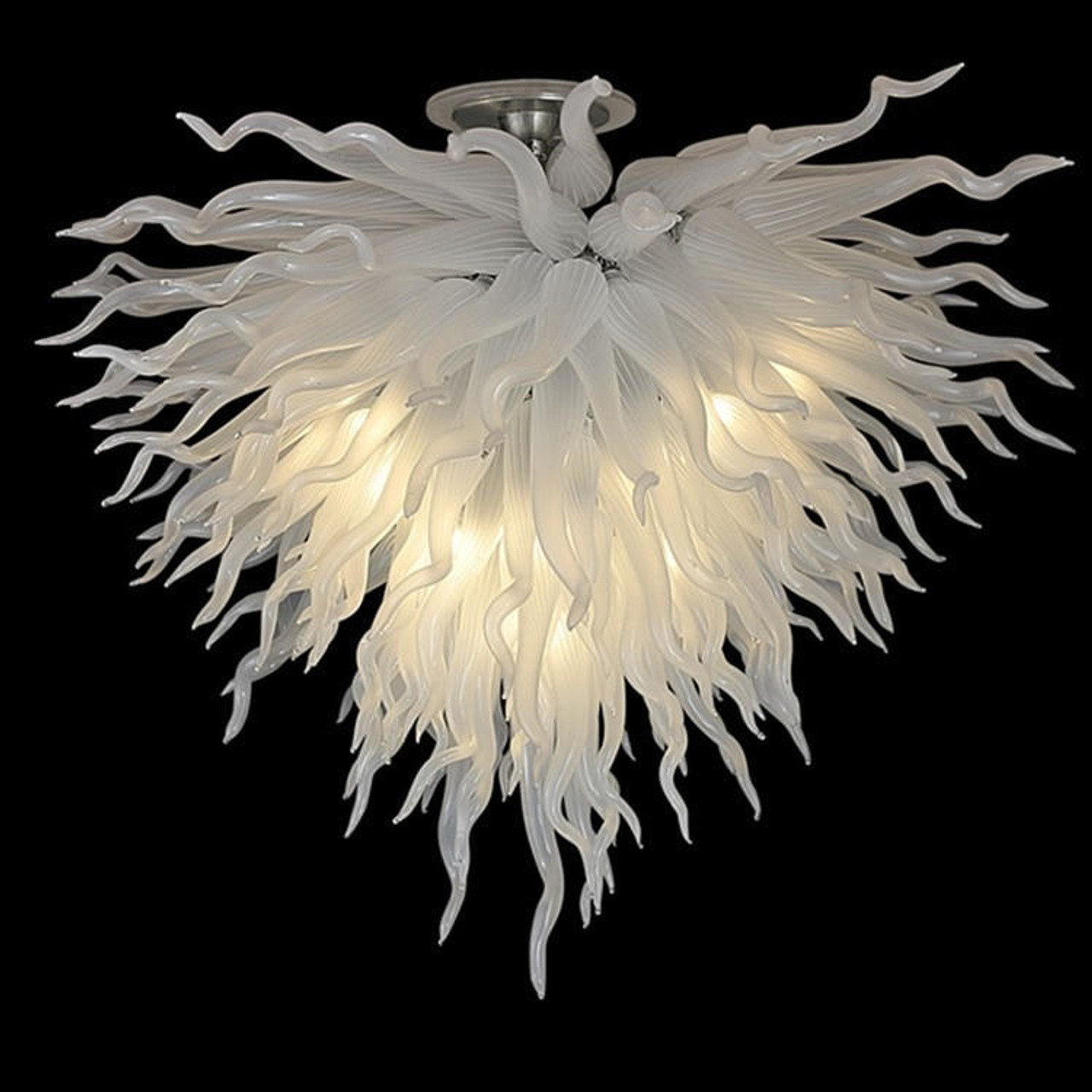The Island of Murano Italy: A Journey Through Centuries of Glassmaking Excellence
31st Aug 2024
Introduction
Nestled in the tranquil waters of the Venetian Lagoon, just a short boat ride from Venice, lies the enchanting Island of Murano, Italy. This small island, with its narrow canals, picturesque bridges, and charming streets, is world-renowned for something truly magical: its glass. For over a thousand years, the artisans of Murano have been crafting glass of unparalleled beauty, intricacy, and innovation. The art of glassmaking on this island is more than just a craft; it is a living tradition, a testament to human creativity, and a vital part of Italy's cultural heritage.
Stepping onto the Island of Murano feels like stepping back in time. The echoes of centuries-old techniques resonate in the clinking of glass tools, the flickering glow of furnaces, and the gentle rhythm of master artisans shaping molten glass into works of art. For those with a passion for art and history, Murano is not just a destination—it is a pilgrimage. It is a place where the past and present converge, where tradition and innovation dance together in the flames of the furnace, creating masterpieces that capture the essence of beauty and craftsmanship.
Join us on a journey through the Island of Murano, Italy, as we explore the rich history of its glassmaking tradition, delve into the intricate processes that transform sand into shimmering glass, and celebrate the artists who continue to keep this extraordinary legacy alive.
The Origins of Murano Glassmaking
A Legacy Born in Venice
The story of Murano glass begins in Venice, the city of canals, gondolas, and breathtaking architecture. In the early Middle Ages, Venice was a thriving hub of trade and commerce, attracting merchants and artisans from all corners of the world. Among these artisans were glassmakers who had learned their craft from the Romans and the Byzantines. By the 8th century, Venice had already established itself as a center of glassmaking, but it was not until the 13th century that the industry truly began to flourish.
In 1291, fearing the risk of fire posed by the glassmakers' furnaces, the Venetian government ordered all glass furnaces to be moved from the crowded city center to the nearby Island of Murano. This strategic relocation not only protected the city from potential disaster but also allowed the glassmakers to work in a more secluded environment, free from the prying eyes of competitors. This move marked the beginning of Murano's rise as the epicenter of glassmaking in Europe.
The Golden Age of Murano Glass
During the Renaissance, Murano reached the height of its glassmaking prowess, becoming a beacon of innovation, artistry, and luxury. The island's glassmakers, known as "maestri" (masters), were held in the highest regard, enjoying special privileges and social status. They were pioneers in developing new techniques and styles, many of which remain the foundation of glassmaking today.
One of the most significant innovations of this period was the development of "cristallo," a clear, colorless glass that was almost indistinguishable from rock crystal. This breakthrough was achieved by adding manganese to the glass mixture, a closely guarded secret that allowed Murano to dominate the European glass market for centuries. Cristallo became the standard for glass production and was used to create everything from delicate goblets and intricate chandeliers to ornate mirrors and elaborate vases.
Another hallmark of Murano's golden age was the introduction of colored glass, achieved by adding various metal oxides to the glass mixture. This innovation led to the creation of vibrant, richly hued pieces that were highly sought after by the aristocracy and royalty of Europe. The maestri of Murano perfected techniques such as "filigrana" (filigree), where threads of colored glass were embedded in clear glass, and "millefiori," where small pieces of colored glass were arranged in intricate patterns before being fused together.
Murano glass became a symbol of wealth and refinement, and the island's reputation spread far beyond Italy's borders. Kings, queens, and noblemen all sought to possess Murano glass, and the island's artisans were commissioned to create masterpieces for some of the most prestigious courts in Europe.
The Art of Glassmaking on Murano
The Magic of the Furnace
At the heart of Murano's glassmaking tradition is the furnace, where the raw materials of glass—silica sand, soda, and lime—are transformed into molten glass at temperatures exceeding 1,400 degrees Celsius (2,552 degrees Fahrenheit). This glowing, viscous material is the lifeblood of the craft, waiting to be shaped and molded by the skilled hands of the maestri.
The process of glassmaking is a delicate balance between science and art, requiring both technical expertise and creative vision. The glassmaker uses a "canna" (a long metal blowpipe) to gather a blob of molten glass from the furnace. With a combination of blowing, rolling, and shaping, the glassmaker begins to coax the glass into its desired form. As the glass cools, it becomes more rigid, allowing the artisan to refine the shape and add intricate details.
One of the most mesmerizing aspects of glassmaking is the way in which the maestri manipulate the glass, stretching and twisting it to create delicate spirals, swirls, and patterns. The process requires not only precision and control but also an intuitive understanding of the material's behavior as it transitions from a liquid to a solid state.
Techniques and Styles
Over the centuries, the artisans of Murano have developed a wide range of techniques that have become synonymous with the island's glassmaking tradition. Each technique requires a unique set of skills and tools, and many are closely guarded secrets passed down through generations of glassmakers.
One of the most famous techniques is "lattimo," or milk glass, which was developed in the 15th century. By adding tin oxide to the glass mixture, the artisans were able to create an opaque, white glass that resembled porcelain. Lattimo became highly prized for its resemblance to fine china and was used to create elaborate tableware and decorative objects.
Another iconic technique is "aventurine," named after the Italian word "avventura," meaning adventure. This technique involves adding copper or gold flakes to the glass mixture, creating a shimmering, metallic effect that sparkles in the light. Aventurine glass was often used to create luxurious decorative pieces and jewelry, and its distinctive sparkle became a hallmark of Murano glass.
The "sommerso" technique, developed in the 1930s, involves layering different colors of glass to create a striking visual effect. The result is a piece that appears to have one color encased within another, creating a sense of depth and dimension. This technique has become a favorite among collectors and designers, and it continues to be used by contemporary glassmakers on Murano.
The "incalmo" technique, where two or more glass bubbles of different colors are joined together while still hot, creating a seamless transition between the hues, is another hallmark of Murano’s glassmaking tradition. This labor-intensive process requires incredible precision and timing, as the glass must be kept at just the right temperature to ensure a perfect fusion.
Murano glassmakers are also renowned for their mastery of "murrine," a technique that involves creating intricate patterns from small slices of colored glass canes. These slices, known as murrine, are arranged in a mosaic-like pattern and then fused together to create a solid piece. The result is a stunning kaleidoscope of colors and patterns, often used in the creation of vases, bowls, and decorative objects.
The Role of the Maestro
In the world of Murano glass, the title of "maestro" is reserved for those who have achieved the highest level of skill and expertise in the craft. Becoming a maestro is not just about mastering the technical aspects of glassmaking; it is also about developing a unique artistic vision and a deep understanding of the material.
The relationship between a maestro and their team of assistants is crucial to the success of the glassmaking process. Each member of the team has a specific role, from gathering the molten glass to assisting with shaping and adding decorative elements. The maestro, however, is the conductor of this intricate symphony, guiding the process with precision and creativity.
One of the most important qualities of a maestro is their ability to innovate and push the boundaries of the craft. While tradition plays a central role in Murano glassmaking, the maestri are constantly experimenting with new techniques, forms, and materials. This spirit of innovation is what has allowed Murano to remain at the forefront of the glassmaking world for centuries.
The Renaissance of Murano Glass
Challenges and Resilience
The history of Murano glass is not without its challenges. The island's glassmaking industry has faced numerous threats over the centuries, from the rise of mass production and competition from other countries to economic downturns and changing tastes. However, the resilience of the Murano glassmakers has ensured that the tradition has not only survived but thrived.
One of the most significant challenges came in the 20th century when the advent of industrial production and the rise of new materials, such as plastic, led to a decline in demand for hand-crafted glass. Many of Murano's historic glassworks were forced to close, and the future of the industry seemed uncertain.
Despite these challenges, the maestri of Murano refused to let their craft die. They responded by focusing on the unique qualities of Murano glass—its artistry, craftsmanship, and heritage—that could not be replicated by machines. By emphasizing the value of handmade, artisanal products, Murano glassmakers were able to carve out a niche in the luxury market, where their creations were appreciated as works of art rather than mere functional objects.
Revival and Innovation
In recent decades, there has been a renewed interest in Murano glass chandeliers, driven by a growing appreciation for artisanal craftsmanship and the desire for unique, one-of-a-kind pieces. This revival has been fueled by a new generation of glassmakers who are breathing fresh life into the tradition, while still honoring the techniques and skills passed down from their predecessors.
Contemporary Murano glass artists are pushing the boundaries of the craft, experimenting with new forms, colors, and techniques. Some are collaborating with designers, architects, and fashion houses to create bespoke pieces that blend traditional craftsmanship with modern design sensibilities. Others are exploring the use of glass in contemporary art, creating installations and sculptures that challenge conventional ideas of what glass can be.
One of the most exciting developments in the revival of Murano glass is the emphasis on sustainability and environmental responsibility. Many glassmakers on the island are now using recycled glass and eco-friendly practices in their production processes, ensuring that the tradition can continue for future generations without harming the environment.
Visiting Murano: A Pilgrimage for Art and History Enthusiasts
Exploring the Glassworks
For those with a passion for art, history, and craftsmanship, a visit to Murano is an unforgettable experience. The island is home to numerous glassworks, many of which are open to the public, offering visitors the chance to witness the magic of glassmaking firsthand.
Stepping into a Murano glass workshop is like stepping into another world. The heat of the furnace, the glow of molten glass, and the rhythmic movements of the artisans as they work their craft create an atmosphere of creativity and tradition that is palpable. Visitors can watch as the glass is transformed from a glowing, amorphous blob into a delicate vase, a shimmering chandelier, or an intricate sculpture.
Many glassworks offer guided tours, where visitors can learn about the history of the craft, the different techniques used, and the unique properties of Murano glass. Some workshops even offer hands-on experiences, allowing visitors to try their hand at shaping glass under the guidance of a maestro.
The Museo del Vetro
No visit to Murano would be complete without a visit to the Museo del Vetro (Glass Museum), located in the historic Palazzo Giustinian. The museum houses an extensive collection of Murano glass, spanning from ancient Roman times to contemporary works. The exhibits provide a fascinating overview of the history of glassmaking on the island, showcasing the evolution of techniques, styles, and forms over the centuries.
The museum's collection includes some of the most exquisite examples of Murano glass, from delicate filigree pieces and intricate millefiori designs to stunning chandeliers and avant-garde sculptures. The Museo del Vetro is not just a celebration of Murano's past; it is also a testament to the enduring legacy of the island's glassmakers and their continued influence on the world of art and design.
Shopping for Murano Glass
For those looking to bring a piece of Murano glass home with them, the island offers a wide range of shops and galleries where visitors can purchase authentic, handmade glass. From small, family-run boutiques to renowned galleries, there is something for every taste and budget.
When shopping for Murano glass, it is important to look for the "Vetro Artistico Murano" trademark, which certifies that the piece was made on the island using traditional techniques. This trademark is a guarantee of authenticity and quality, ensuring that you are purchasing a genuine work of art.
Whether you are looking for a delicate vase, a statement chandelier, or a piece of jewelry, Murano offers an array of options that reflect the island's rich artistic heritage. Each piece of Murano glass is a unique creation, a tangible connection to the centuries-old tradition of craftsmanship that defines the island.
Conclusion
The Island of Murano, Italy, is a place where art, history, and craftsmanship converge in the most beautiful and meaningful way. For over a thousand years, the glassmakers of Murano have honed their craft, transforming simple materials into extraordinary works of art. Their legacy is not just one of skill and technique, but also one of passion, creativity, and a deep respect for tradition.
Today, Murano remains a beacon of glassmaking excellence, where the past and present coexist in harmony. The maestri of Murano continue to push the boundaries of their craft, while honoring the techniques and traditions that have been passed down through generations. For those who love art and history, a journey to Murano is more than just a visit—it is a celebration of the human spirit and the enduring power of creativity.
As we reflect on the centuries of glassmaking excellence on the Island of Murano, we are reminded of the importance of preserving and supporting the traditions that define our cultural heritage. The glass of Murano is not just an object to be admired; it is a story, a legacy, and a living testament to the artistry and ingenuity of those who have come before us.







